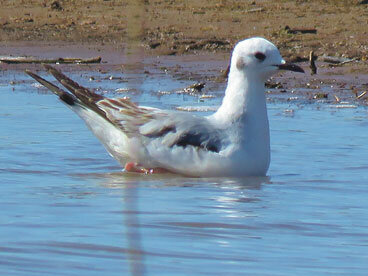
Photo courtesy Charles Martinez
This week’s Bird of the Week, compliments of the Weminuche Audubon Society and Audubon Rockies, is the Bonaparte’s gull.
Even the experts agree that of all bird groups, gull identification is the most challenging. Basically, they are all white-bodied birds with gray backs. Paying attention to size, shape, color pattern, bills and legs are all a part of determining the species. In Archuleta County, only six species have been reported more than once, which limits the field of likely candidates here.
The Bonaparte’s is one of the smallest gulls seen in North America. In summer breeding plumage, it has a black hood. A non-breeding adult like the one in this photo has a white head with a black ear spot, dark thin bill and pinkish legs. They winter along both coasts but also well offshore and way inland in southern states with open water, and are seen across most of North America in migration.
These gulls breed where insects are abundant in remote, marshy areas near lakes and streams in the boreal forest regions of Canada and Alaska. They are the only gull species that regularly builds a nest of twigs in a conifer tree, where they are protected from predators on the ground.
During summer, these gulls eat mainly insects caught on the wing. At other times they are opportunistic foragers that feed on small fish and a variety of invertebrates. They are adept at catching prey while dipping and diving from the air, but will also feed along the shoreline, in agricultural fields and while swimming in shallow water. They have even been observed landing on the heads of brown pelicans and stealing fish from their bills.
Spring is a great time to get out and see birds that are passing through on their long journeys to the north.
For information on events, visit www.weminucheaudubon.org and www.facebook.com/weminucheaudubon/.